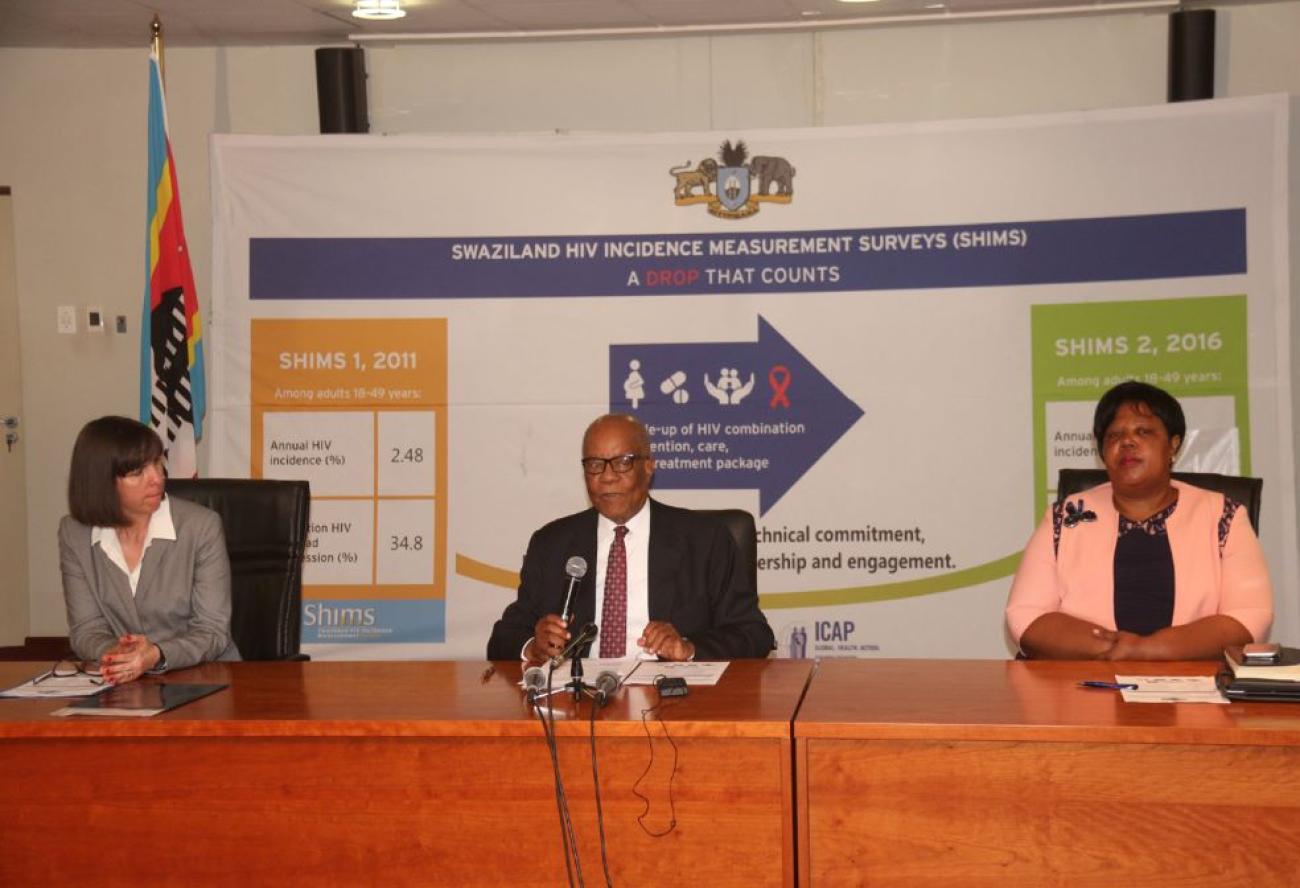Seventy-three percent of adults in Swaziland living with HIV and taking ARVs are virally suppressed,” the Prime Minister of the Kingdom of Swaziland, His Excellency Dr Barnabas Sibusiso Dlamini, announced today in a statement during the presentation of the 2016 Swaziland HIV Incidence Measurement Survey 2 (SHIMS 2) findings at the Cabinet offices.
The country achieved an increase, from 34.8% to 73%, in the extent of viral load suppression among those on anti-retroviral treatment (ART) between ages 18-49 years. The annual rate of new infections as a proportion of the Swazi population, according to the SHIMS 2 findings, has been reduced from 2.5% in 2010-2011, to 1.4% in 2015-2016 (2.0% for adult women and 0.9% for adult men) which is more than 44% reduction in new infections.
“Swaziland has demonstrated to the world that shared responsibility and global solidarity produces results,” UNAIDS Executive Director, Michel Sidibé said in a press statement. “Working together with PEPFAR and partners, Swaziland is saving lives and on track to control the epidemic,” he added.
His Excellency, Dr. Sibusiso Barnabas Dlamini stated that these results indicate that a much higher proportion of those on ART are taking their treatment more consistently – a vital routine that also has to be sustained for an individual’s protection from any slide from HIV into AIDS. “We are proud to be the first country in the world to have used this highly robust, out-in-the-field system to measure the impact of the national response, which has produced the results disseminated today.” the Prime Minister remarked when giving a background to the SHIMS, first conducted in 2011.
After 2011, there was a rapid scaling-up of HIV prevention and treatment interventions such as ART, male circumcision, HIV testing services and the prevention of mother to child HIV transmission. The rapid scale up of a comprehensive HIV response, including prevention and treatment, in the past five years was noted by the Prime Minister to have made a significant impact.
He commended the immeasurable support from development partners, particularly the UN family, Global Fund, PEPFAR, the Clinton Health Access Initiative, the Centre for Disease Control (CDC) and the International Centre for AIDS Care and Treatment Programs (ICAP). “These partnerships have facilitated a substantial skills transfer from international to national teams and the national capacity to conduct such national surveys. Reducing and, ideally, eliminating, the incidence of new HIV infections is, one battle in a bigger war,” he said. The SHIMS, which is part of the Public Health Impact Assessments (PHIA), was conducted with funding from United States President’s Emergency Plan for AIDS Relief (PEPFAR).
The PM concluded by noting that the Government now stands on a new and elevated springboard, ready to jump to higher levels of commitment and achieve the national goal of an AIDS-free nation by 2022.
“The SHIMS 2 statistics are enormously encouraging and a fitting tribute to the political leadership at the highest level, to the structured and systematic national planning and coordination, our generously supportive development partners, the dedicated health workers at the front line of service delivery, our community leaders and a committed nation of determined citizens. That is the team. And, as in any team activity, all must pull their weight and share both the responsibility and, as today, the credit."




